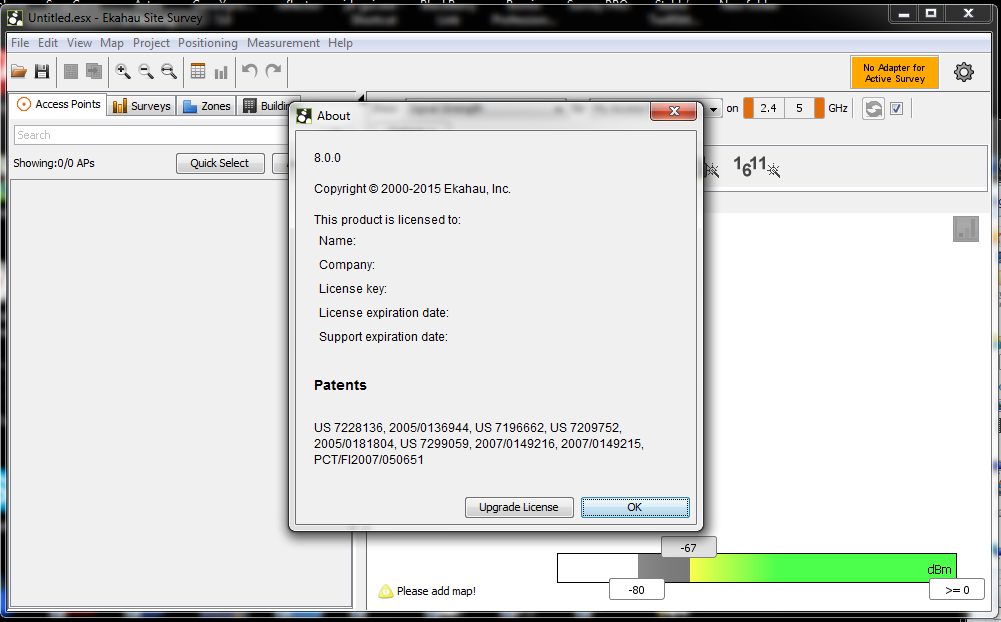
Ekahau Site Survey 2 1 Crack
R4i-SDHC 3DS kernel download (with mark). 2.First, reformatting the SD, download the latest kernel 1.48b. 3.Unzip and copy the files. Note:When upgrading the r4i-gold card. A copy of the feature list (as written) follows the images. Latest r4i Gold kernel download for free and fast, gold r4i software update, Buy r4i gold card with best price. Upload the newest AR cheat data base, then copy the 'usrcheat.dat' file to'R4iMenu' file. R4I-GOLD 3DS Kernel Download: Language. I have a R4i Gold which is the one from www.r4ids.com, and have the kernael 1.31. Download USRCHEAT.DAT for R4, R4I AND R43DS v1.41 (9.55MB) for NDS. The file 'USRCHEAT.DAT' can be downloaded instantly from our NDS Cheat Files Cheat Files category. R4i gold usrcheatdat download pc. Download USRCHEAT.DAT for R4, R4I AND R43DS v1.41 (9.55MB) for NDS. The file 'USRCHEAT.DAT' can be downloaded instantly from our. R4 DS V1.02 Cheat Code Database Download,Put the cheat.dat to _system_ directory, overwrite the old database.
Jul 13, 2017 - To address the increasing capacity challenges with Wi-Fi networks, the Ekahau Site Survey and 3D Planner version 9.0 was released on July 6. A quick demonstration of automated 802.11n Wi-Fi network planning using Ekahau Site Survey 5.0.
Ekahau Site Survey 9.0 Feature Summary • • • • • High Capacity Area Planner First things first. Yes, we have had the Capacity Planner already several years. However, ESS did not support mixing high and low capacity areas within a single project.
But now it does, yay! Ekahau Site Survey 9.0 features the easiest yet most comprehensive Wi-Fi capacity tool.
At least we think so. And we are certainly not biased to make that statement. ESS now allows you to define multiple different type of high capacity areas such as auditoriums or class rooms. Simply (1) use the new Area tool to (2) draw the capacity area and (3) set number of devices used within that area.
Similarly, you can now select coverage requirements per area. For example in a warehouse, you may want to ensure higher signal strength for the handheld terminals on the shop floor but the office PC's could live with lower coverage. The number of devices you set is equally divided between laptops and smartphones. So when you set 200 devices, that will mean 100 laptops ( normal usage) and 100 smartphones (light usage / background sync). We are assuming here that every network user is carrying a laptop and a smartphone which we all are, right?:) Naturally this very simplistic approach to capacity analysis is not always sufficient. When you need to do it the, we do have the right tools for you.
You can always go into very small details and adjust for example: • The exact number of devices • Device types and their application usage • Minimum data rates, band steering, numbers of SSIDs, and even the RTS/CTS option • (Configure via Project > Network Configuration) Once you are all set with your capacity requirements and the network plan, take a look at the new Capacity Health visualization. It shows you a summary of whether the network works or not, and where it may possibly fail.
Automatic temperature controlled fan using arduino pdf. Temperature Controlled Fan by using Arduino-uno. It consists of automatic circuit which controlls the speed of the fan according to variation in temperature and shows result in Thingspeak. In this arduino based project, we are going to control DC fan speed according to the room temperature and show these parameter changes on a 16x2 LCD display. It is accomplished by the data communications between Arduino, LCD, DHT11 sensor Module and DC fan that is controlled by using PWM.
But the big new thing about ESS 9.0 is really the Airtime Utilization visualization. The Airtime visualization provides a detailed capacity analysis showing you what actually happens in the RF with your setup. For example, in case you have too many SSIDs and low data rates enabled, you might see high management frame overhead eating up airtime from data traffic.
Make sure you also check out the revised Capacity: Clients per AP visualization which shows you how many clients would be associated with each access point and what would be the total bitrate required. All-new Auto-Planner The number one complaint regarding to the Auto-Planner in the past has been access point overpopulation. For some strange reason especially the infrastructure vendors loved this feature, but the most of you pros don't. So and locked and, the research guys to their room for couple of months and they managed to improve it significantly. The Ekahau Auto-Planner now prevents access points overpopulation which is the number one improvement! In addition, the Auto-Planner, automatically avoids placing the APs to hallways (when possible), elevator shafts, and other in-optimal locations. Just take a look at the below screen capture beautiful, right?

The Auto-Planner can also disable the 2.4 GHz radios to avoid CCI. In addition, it supports dual-5GHz planning meaning that it can switch the turned off 2.4 GHz radio to operate on 5 GHz band. Configurable Channel Planner The Channel Planner has also been completely re-written. The major difference here is that you can now fully configure which channels area available for the Channel Planner.